Methods for recovery
Methods for Recovery
By: Kevin Murphy
Some people neglect to perform the proper rest and recovery methods after exercising or competition and in return don’t receive the gains they are looking for. Implementing a proper recovery strategy to your program design will help you achieve success on the field, court, ice, or in the gym.
What is Recovery?
There are many aspects of training that affect how an athlete performs every time they compete. One aspect often overlooked is recovery. Recovery after exercise is essential to repairing the muscles and tissues one uses during training. According to the Journal of Strength and Conditioning Research, recovery is defined as the rate at which the fatigue induced by a prior training session or competition dispersed, relative to the magnitude of the fatigue. This definition is helpful in understanding recovery, but what is fatigue and how is it measured? Someone is considered fatigued when they are in a state of reduced performance. The reasons people experience fatigue is not entirely known. It is thought that fatigue comes from either the central nervous system inhibiting effort to protect the muscle or from the muscle no longer being capable to perform.
There are different types of recovery. There is recovery during performance, recovery between sets, and recovery between training sessions or competition. Recovery between training sessions or competition is important because this is when the body adapts to the training stimuli, hopefully yielding the results one is looking to accomplish.
Methods for Recovery
How an athlete recovers between training sessions is important for their performance in future training sessions. The easiest and most effective recovery method is hydration. Having plenty of water throughout the day and during training will optimize the body’s recovery and performance.
Nutrition is another method of recovery. It is important to eat a meal within two hours after a training session. That meal should have plenty of complete proteins (eggs, fish, meat) and quality carbohydrates to refuel the body. Getting protein within an hour after a workout is optimal for muscle repair and protein synthesis. It can also aid in preventing delayed onset muscle soreness (DOMS). It is commonly believed that stretching will aid in recovery. This is not a recommended recovery method. During recovery it is important to increase blood flow to the muscle and stretching will prevent this. Instead, to enhance blood flow, foam rolling, walking or other mild exercise is recommended.
Finally, forming proper sleep and rest habits are important to optimizing recovery. The body needs at least 8 hours of sleep to rebuild the muscles that broke down during the day.
Hydration, nutrition, rest and foam rolling are some of the basic and best ways to recover and regenerate after a training session or competition. These recovery tools can be easily implemented into an individuals training session or in a larger team setting. Ask questions for more information on steps to increase recovery time and general health.
Sources
strengthandconditioningresearch.com
nsca.com
Prepare to succeed
Kevin Murphy, CSCS Strength and Conditioning Coach. Kevin holds a degree from Springfield College in Applied Exercise Science as well as various certifications.

